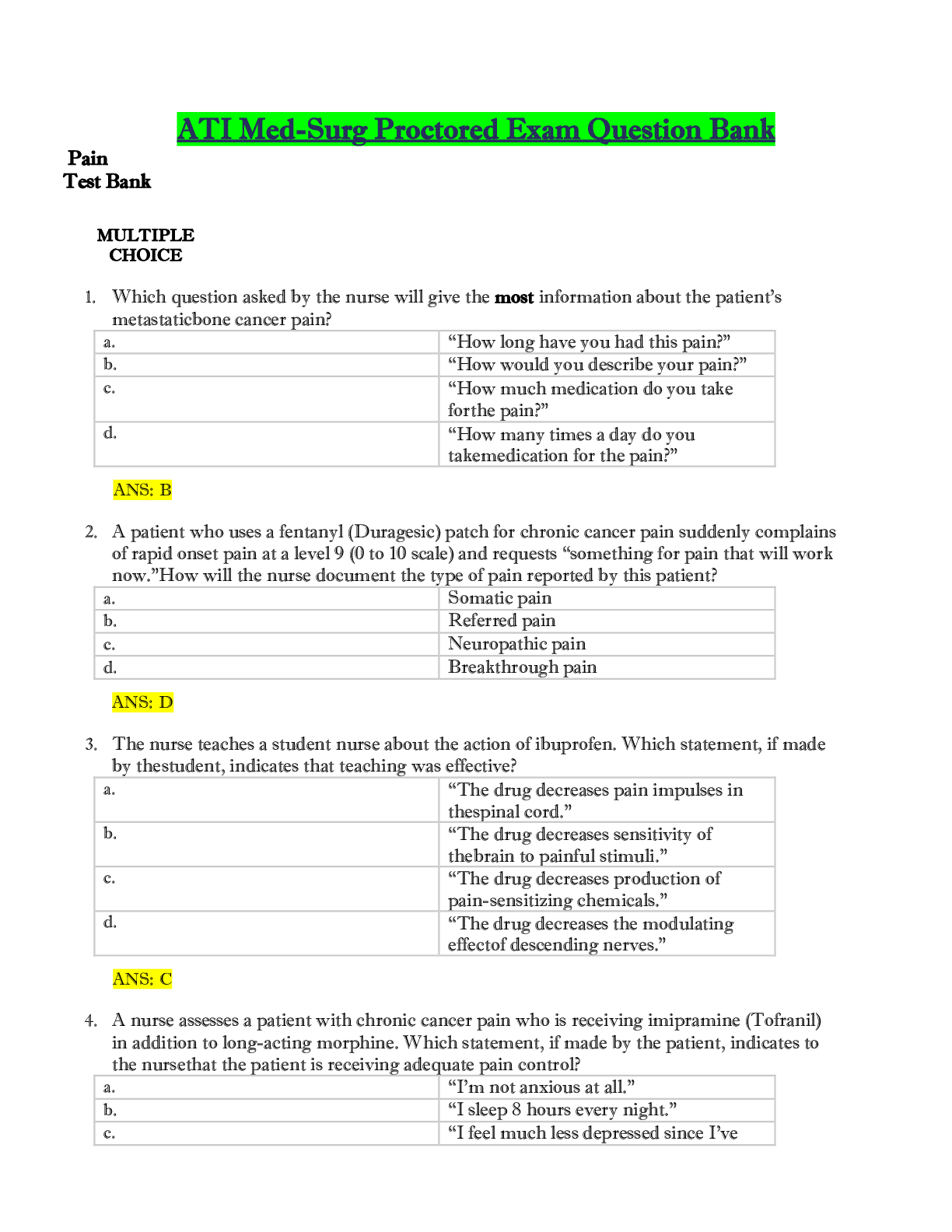*NURSING > MED-SURG EXAM > NURS 325 ATI Med Surg Exam_2020 | NURS325 ATI Med Surg Exam_Graded A (All)
NURS 325 ATI Med Surg Exam_2020 | NURS325 ATI Med Surg Exam_Graded A
Document Content and Description Below
NURS 325 ATI Med Surg Exam 1. A nurse is caring for a client who has a closed head injury and has an intraventricular catheter placed. Which of the following findings indicates that the client is e... xperiencing increased ICP? a. Flat jugular veins b. GCS score of 15 c. Sleepiness exhibited by the client d. Widening pulse pressure e. Decerebrate posturing f. Flat jugular veins is incorrect. With increased ICP, the jugular veins are typically distended. A Glasgow Coma Scale score of 15 is incorrect. A Glasgow Coma Scale score of 15 indicates neurological functioning within the expected reference range for eye opening, motor, and verbal response. Sleepiness exhibited by the client is correct. Sleepiness or difficulty arousing the client from sleep is an indication of increased ICP. Widening pulse pressure is correct. A widening pulse pressure (increase in systolic with concurrent decrease in diastolic blood pressure) is an indication of increased ICP. Decerebrate posturing is correct. Both decerebrate and decorticate posturing indicate increased ICP. 2. A nurse is preparing a client who has supraventricular tachycardia for elective cardioversion. Which of the following prescribed medications should the nurse instruct the clients to withhold for 48hr prior to cardioversion? a. Enoxaparin b. Metformin c. Diazepam d. Digoxin e. Anticoagulants can be beneficial during cardioversion due to their ability to prevent blood clots that can be released into the client's circulatory system after cardioversion. This medication should not be withheld. f. Metformin g. Metformin might be withheld for a client scheduled for cardiac catheterization or other procedures involving contrast dye in order to prevent damage to the kidneys. However, metformin should not be withheld prior to cardioversion. h. Diazepam i. Sedatives are generally administered to clients prior to cardioversion to reduce anxiety and minimize the discomfort associated with the procedure. This medication should not be withheld. j. Digoxin: ANSWER k. Cardiac glycosides, such as digoxin, are withheld prior to cardioversion. These medications can increase ventricular irritability and put the client at risk for ventricular fibrillation after the synchronized countershock of cardioversion. 3. A nurse is assessing a client who has acute cholecystitis. which of the following findings is the nurse’s priority? a. Anorexia b. Abdominal pain radiating to the right shoulder c. Tachycardia d. Rebound abdominal tenderness i. Anorexia ii. Anorexia is nonurgent because it is an expected finding for a client who has acute cholecystitis. Therefore, there is another finding that is the nurse's priority. iii. Abdominal pain radiating to the right shoulder iv. MY ANSWER v. Abdominal pain radiating to the right shoulder is nonurgent because it is an expected finding for a client who has acute cholecystitis. Therefore, there is another finding that is the nurse's priority. vi. Tachycardia vii. When using the urgent vs. nonurgent approach to client care, the nurse should determine that the priority finding is tachycardia. Tachycardia is a manifestation of biliary colic, which can lead to shock. The nurse should position the head of the client's bed flat and report this finding immediately to the provider. viii. Rebound abdominal tenderness ix. Rebound abdominal tenderness is nonurgent because it is an expected finding for a client who has acute cholecystitis. Therefore, there is another finding that is the nurse's priority. 4. A nurse is preparing to admit a client who has dysphagia. The nurse should plant to place which of the following items at the client’s bedside? a. Suction machine b. Wire cutters c. Padded clamp d. Communication board e. Suction machine: ANSWERThe nurse should ensure that a suction machine is at the bedside of a client who has dysphagia to clear the client's airway as needed and reduce the risk for aspiration. f. Wire cutters: The nurse should ensure wire cutters are at the bedside of a client who has an inner maxillary fixation to cut the wires in case the client vomits. This enables the client to clear their airway and reduce the risk for aspiration. g. Padded clamp: The nurse should ensure a padded clamp is at the bedside of a client who has a chest tube to clamp the tube and prevent air from entering the client's chest if there is an interruption in the sealed drainage system. h. Communication board: The nurse should ensure a communication board is at the bedside of a client who has aphasia to assist the client with communicating. 5. A nurse is caring for a client who is having a seizure. Which of the following intervention is the nurse’s priority? a. Loosen the clothing around the client’s neck b. Check the client’s pupillary response c. Turn the client to the side. d. Move furniture away from the client i. Loosen the clothing around the client's neck: The nurse should loosen any restrictive clothing the client is wearing to prevent injury to the client. However, another action is the priority. ii. Check the client's pupillary response: The nurse should perform neurologic checks after the seizure to monitor the client's recovery. However, another action is the priority. iii. Turn the client to the side.: The greatest risk to this client is hypoxia from an impaired airway. Therefore, the priority intervention the nurse should take is to place the client in a side-lying position to prevent aspiration. iv. Move furniture away from the client.: AThe nurse should move furniture away from the client to prevent self-injury. However, another action is the priority. 6. A nurse is providing teaching to aclient who has hypothyroidism and is receiving levothyroxine. The nurse should instruct the client that which of the following supplements can interfere with the effectiveness of the medication? a. Ginkgo biloba b. Glucosamine c. Calcium d. Vitamin C i. Ginkgo biloba ii. Ginkgo biloba reduces the pain associated with peripheral vascular disease by promoting vasodilation. It can interact with medications that have anticoagulant properties, but it is not known to interfere with the absorption of levothyroxine. iii. Glucosamine: Glucosamine treats osteoarthritis by decreasing inflammation and stimulating the body's production of synovial fluid and cartilage. It can interact with medications that have antiplatelet or anticoagulant properties, but it is not known to interfere with the absorption of levothyroxine. iv. Calcium:NSWER v. Calcium limits the development of osteoporosis in clients who are postmenopausal and works as an antacid. Calcium supplements can interfere with the metabolism of a number of medications, including levothyroxine. The nurse should instruct the client to avoid taking calcium within 4 hr of levothyroxine administration. vi. Vitamin C: Vitamin C promotes wound healing. It can cause a false negative in fecal occult blood tests, but it is not known to interfere with the absorption of levothyroxine. 7. A nurse is planning to irrigate and dress a clean, granulation wound for a client who has a pressure injury. Which of the following actions should the nurse take? a. Apply a wet-to-dry gauze dressing b. Irrigate with hydrogen peroxide solution c. Use a 30-ml syringe d. Attach a 24-gauge angiocatheter to the syringe. 8. a. Apply a wet-to-dry gauze dressing.: The nurse should not apply wet-to-dry dressings to clean, granulating wounds as they interrupt viable, healing tissues when they are removed. Appropriate dressings for a wound that is developing granulation tissue include a hydrocolloid dressing and a transparent film dressing. b. Irrigate with hydrogen peroxide solution: the nurse should use hydrogen peroxide to clean contaminated surfaces. Hydrogen peroxide should not be used on a pressure injury wound because it destroys newly granulated tissue. Instead, the nurse should use solutions specifically designed as wound cleansers or 0.9% sodium chloride irrigation to irrigate the wound. c. Use a 30-mL syringe: NSWERThe nurse should use a 30-mL to 60-mL syringe with an 18- or 19-gauge catheter to deliver the ideal pressure of 8 pounds per square inch (psi) when irrigating a wound. To maintain healthy granulation tissue, the wound irrigation should be delivered at between 4 and 15 psi. d. Attach a 24-gauge angiocatheter to the syringe:the nurse should use an 18- or 19-gauge catheter that will apply the appropriate irrigation pressure. A 24-gauge angiocatheter delivers solutions at a higher pressure than necessary for irrigation and a can potentially damage the developing granulation tissues. 1. a nurse Is assessing a client who has Graves’ disease. Thich of the collowing images should undicate to the nurse that the client has exophthalmos: o o This image depicts entropion, which occurs when the skin of the eyelids turns inward, causing the eyelids to rub the eye. Entropion is caused by spasms of the eyelid muscle or trauma and occurs most often in older adult clients due to the loss of supportive tissue. o o This image depicts ectropion, which occurs when the skin of the eyelids turns outward, causing sagging of the lower lids due to muscle weakness. Ectropion occurs with aging and can cause drying of the cornea and ulceration. o o This image depicts ptosis, which occurs when excess skin of the upper eyelid drops down over the eye. Ptosis can occur due to aging or at any age due to diabetes, myasthenia gravis, or stroke. o o MY ANSWER o The nurse should identify an outward protrusion of the eyes as exophthalmos, a common finding of Graves' disease. An overproduction of the thyroid hormone causes edema of the extraocular muscle and increases fatty tissue behind the eye, which results in the eyes protruding outward. Exophthalmos can cause the client to experience problems with vision, including focusing on objects, as well as pressure on the optic nerve. 11. the nurse is providing teaching to a female client who has a history of UTI’s. which of the following information should the nurse include in the teaching? a. Avoid foods that are high in ascorbic acid b. Add oatmeal to the water when taking a tub bath c. Urinate every 6 hours d. Take daily cranberry supplements? - - - - - Contiued [Show More]
Last updated: 1 year ago
Preview 1 out of 53 pages
Instant download
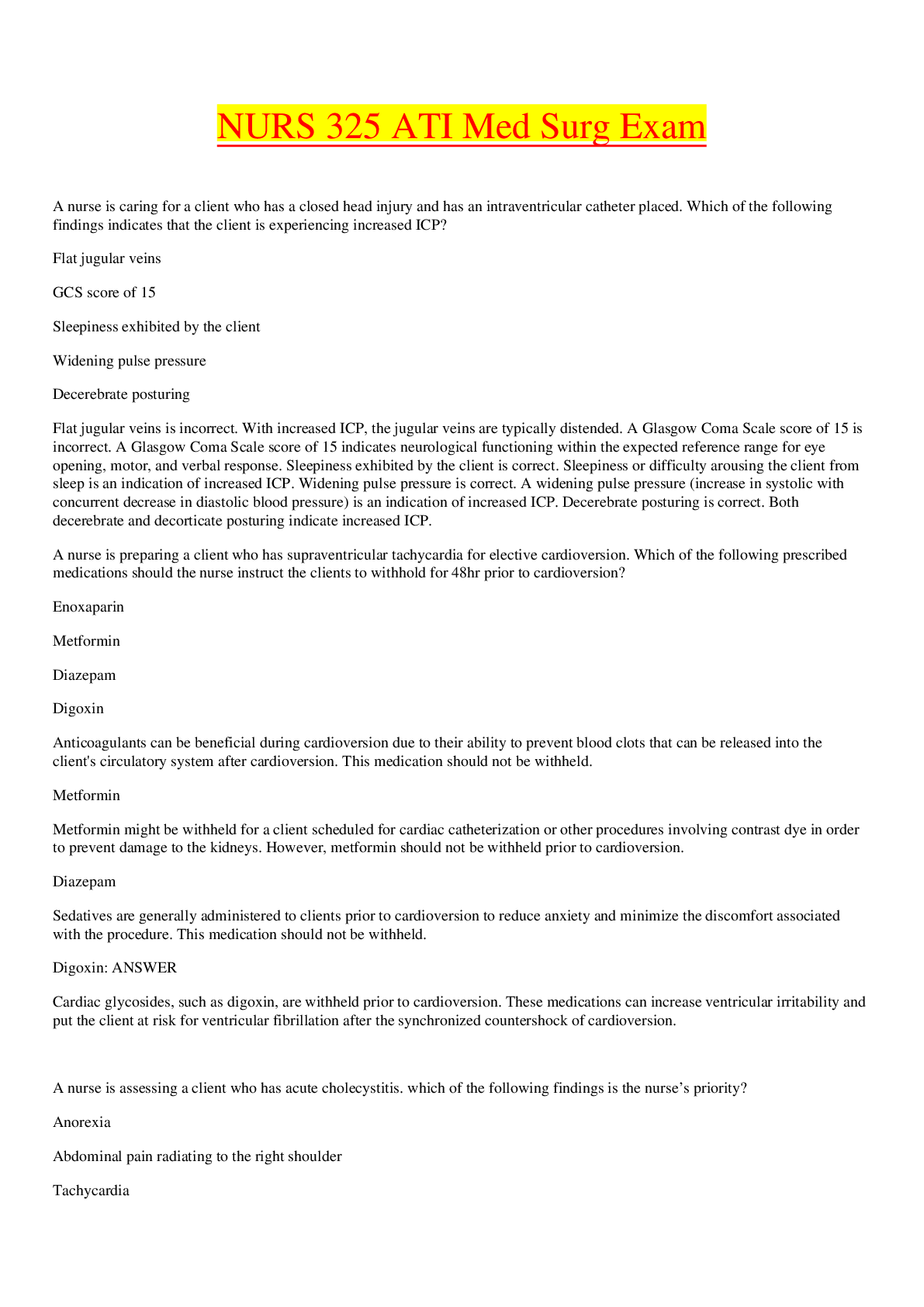
Instant download
Reviews( 0 )
Document information
Connected school, study & course
About the document
Uploaded On
Mar 10, 2021
Number of pages
53
Written in
Additional information
This document has been written for:
Uploaded
Mar 10, 2021
Downloads
0
Views
54

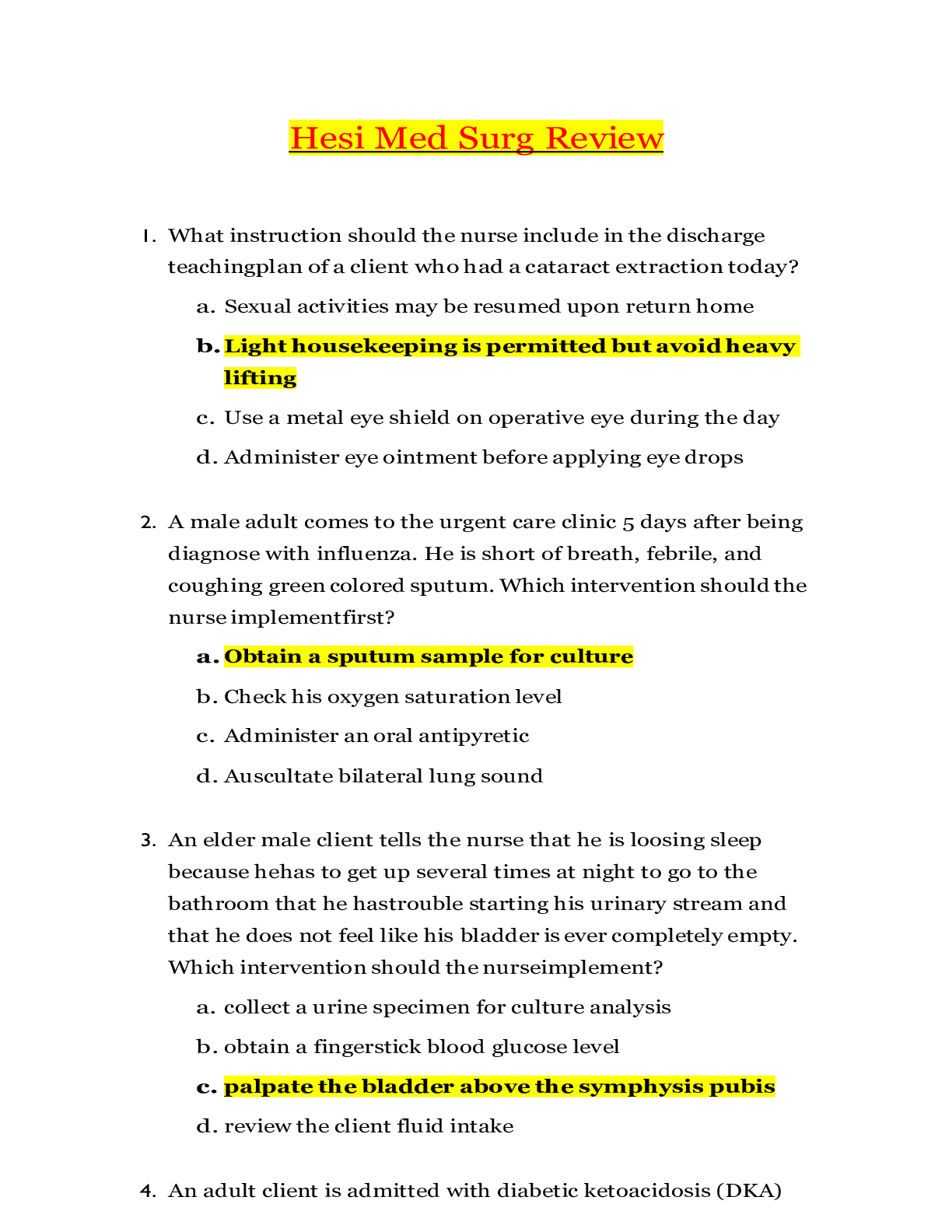
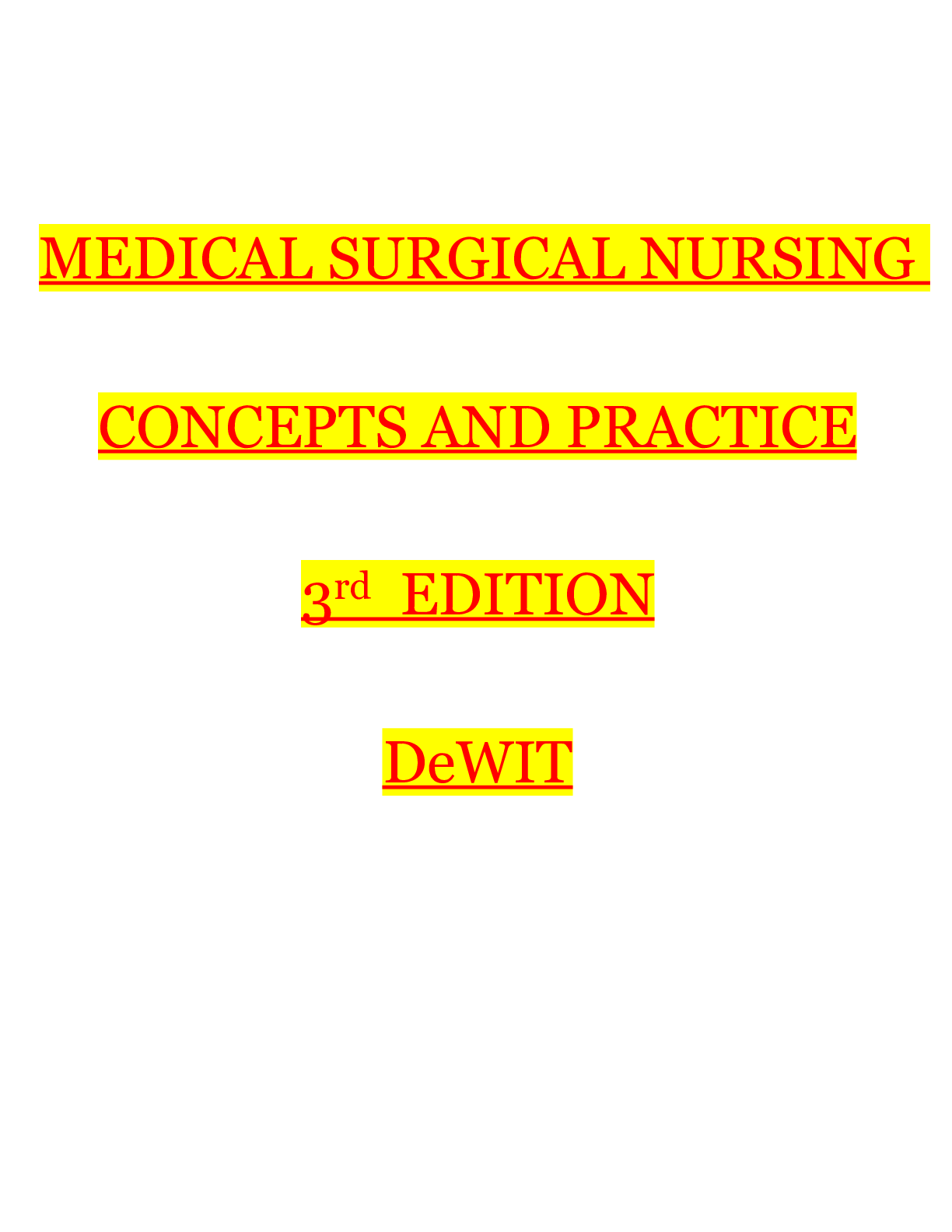



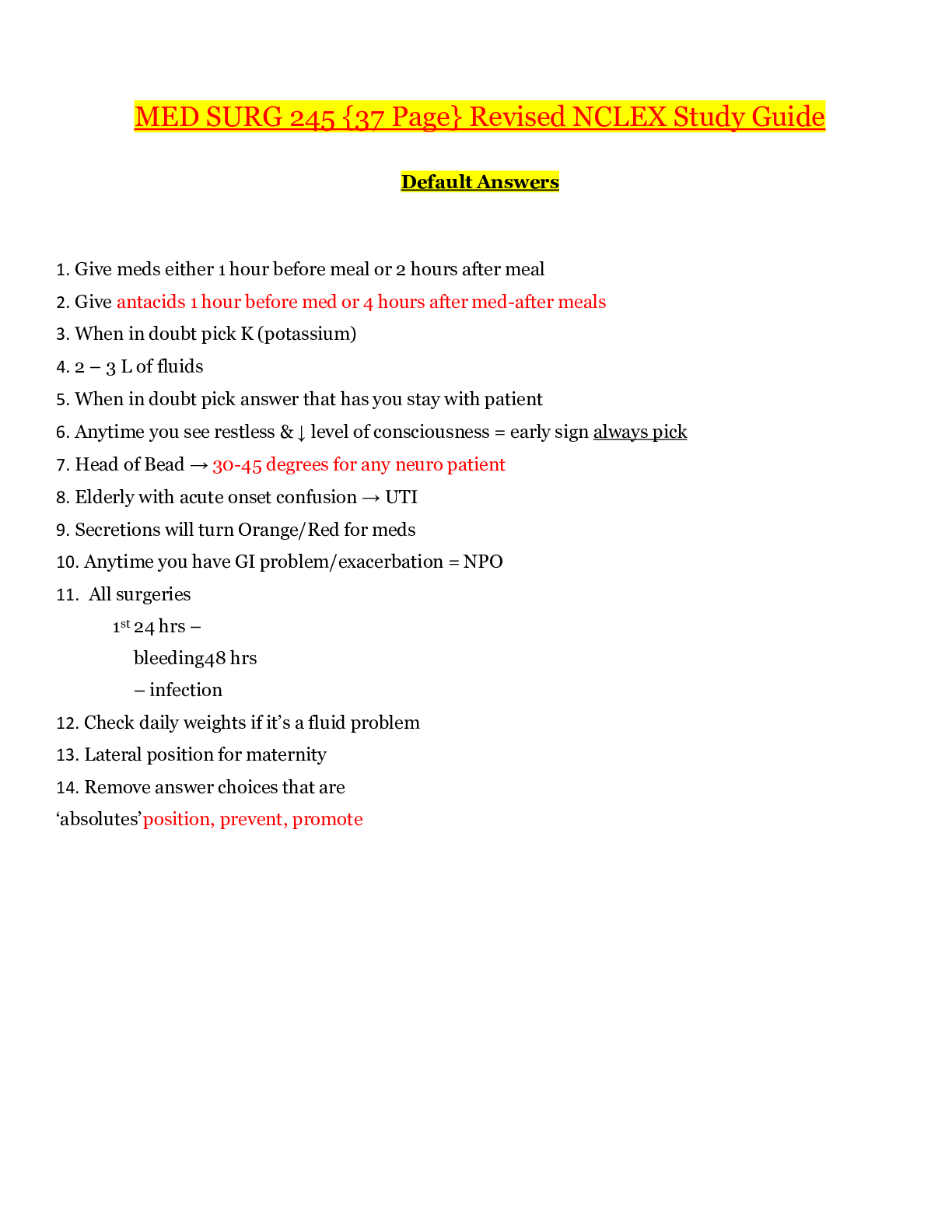
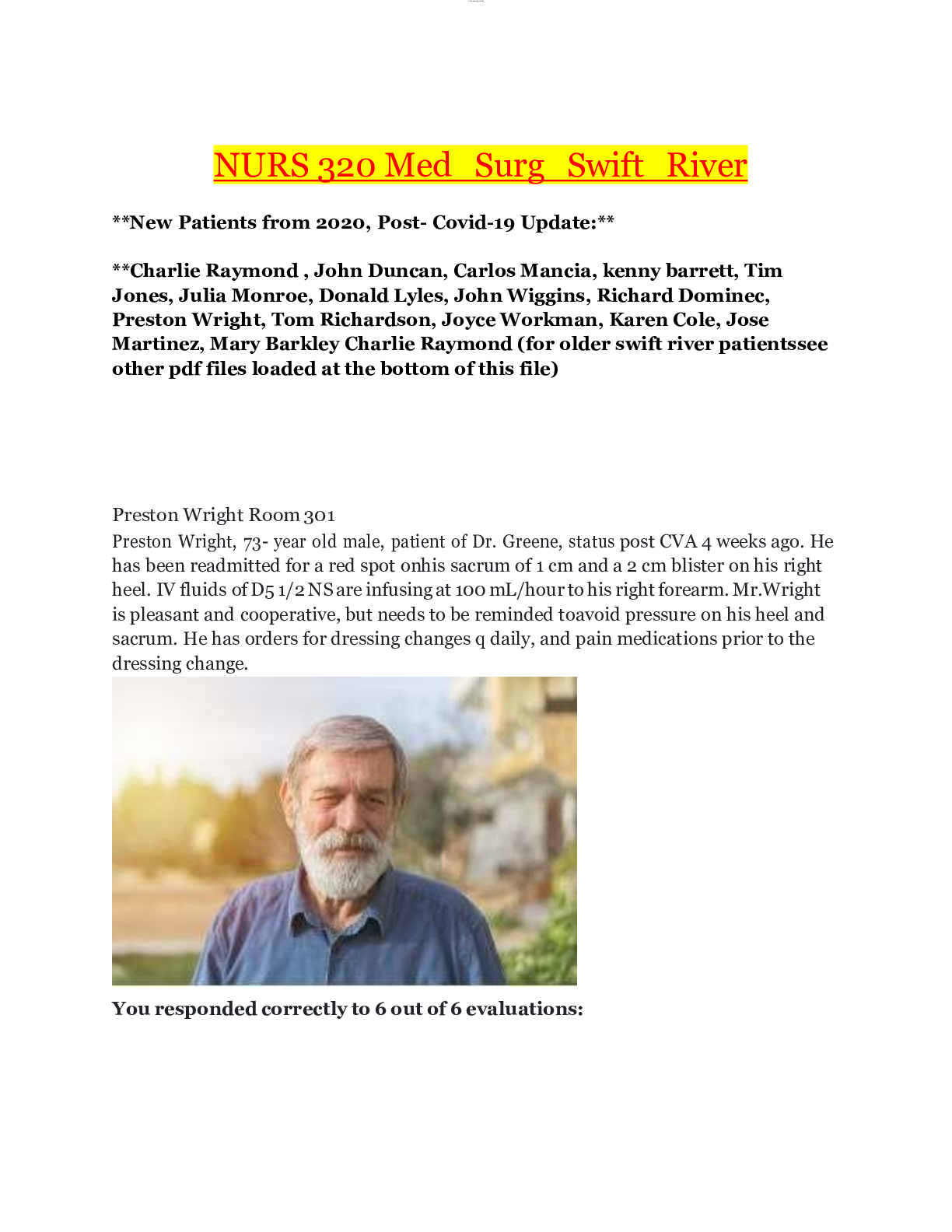
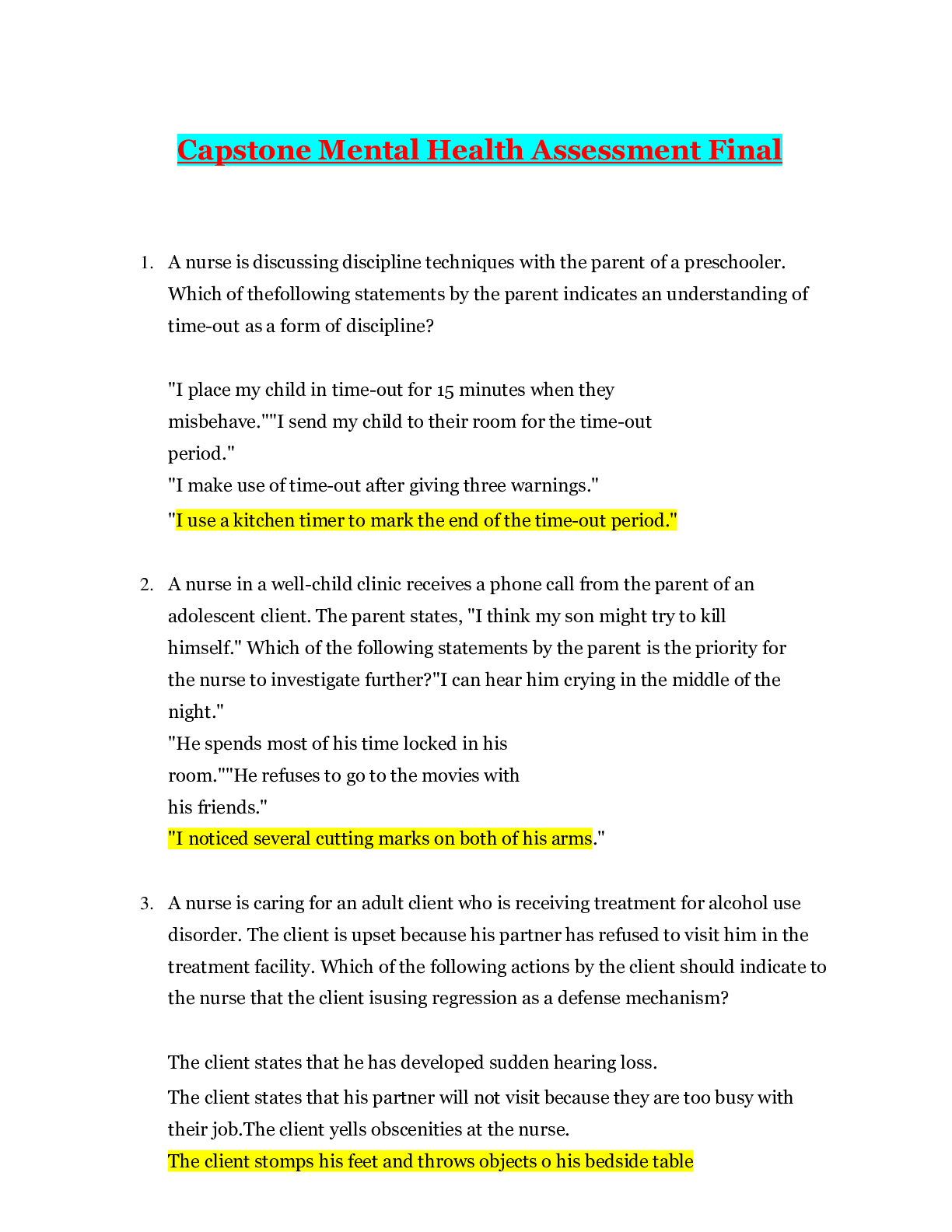

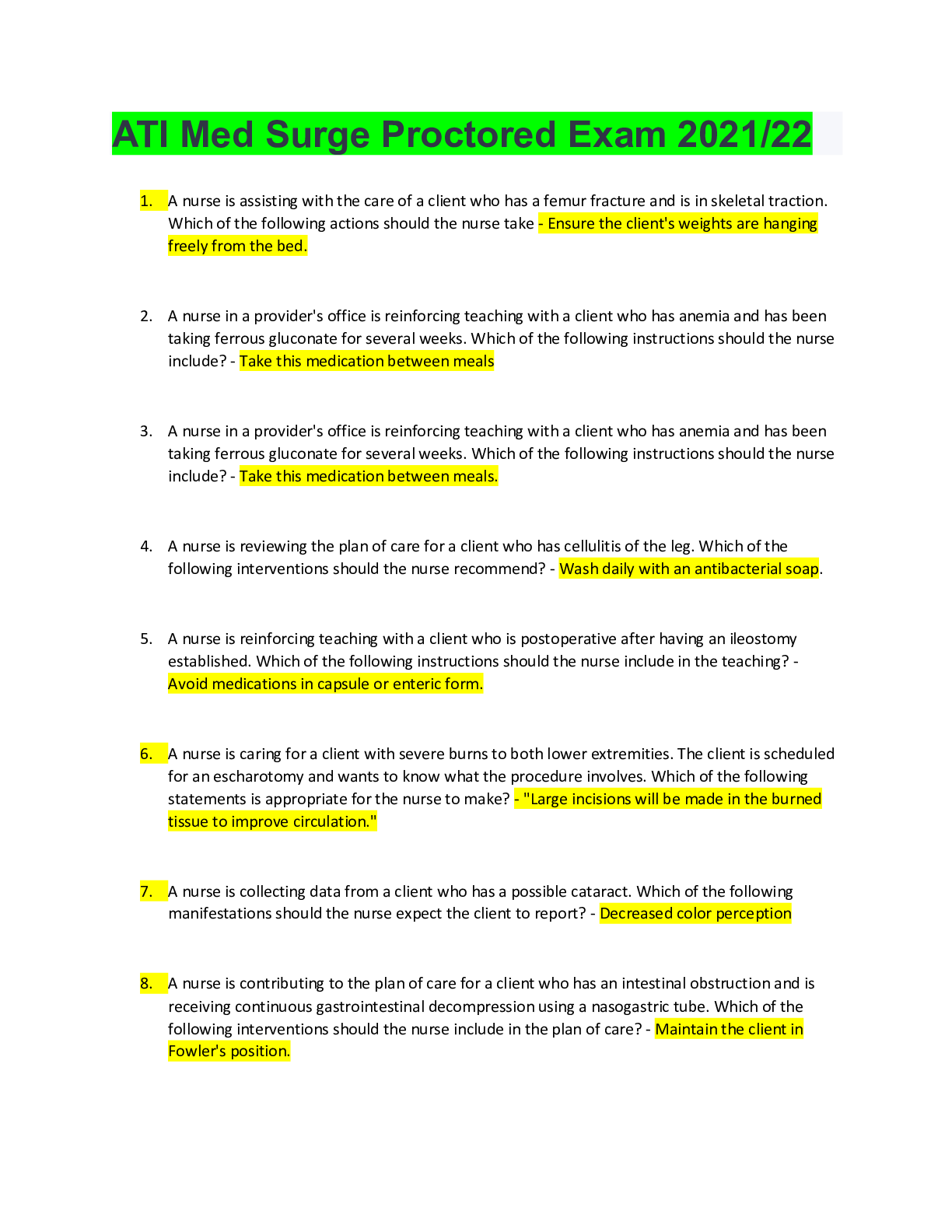
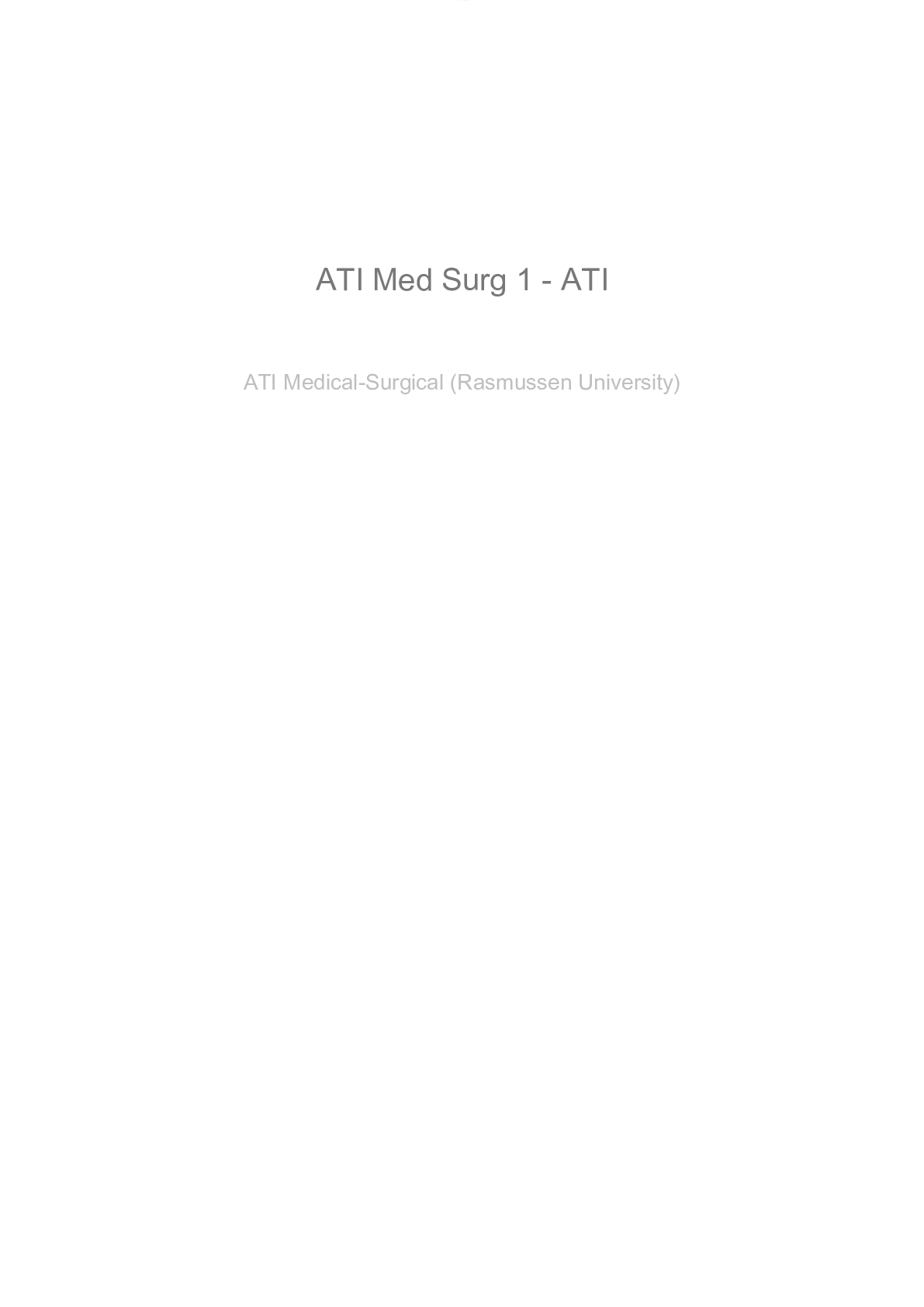
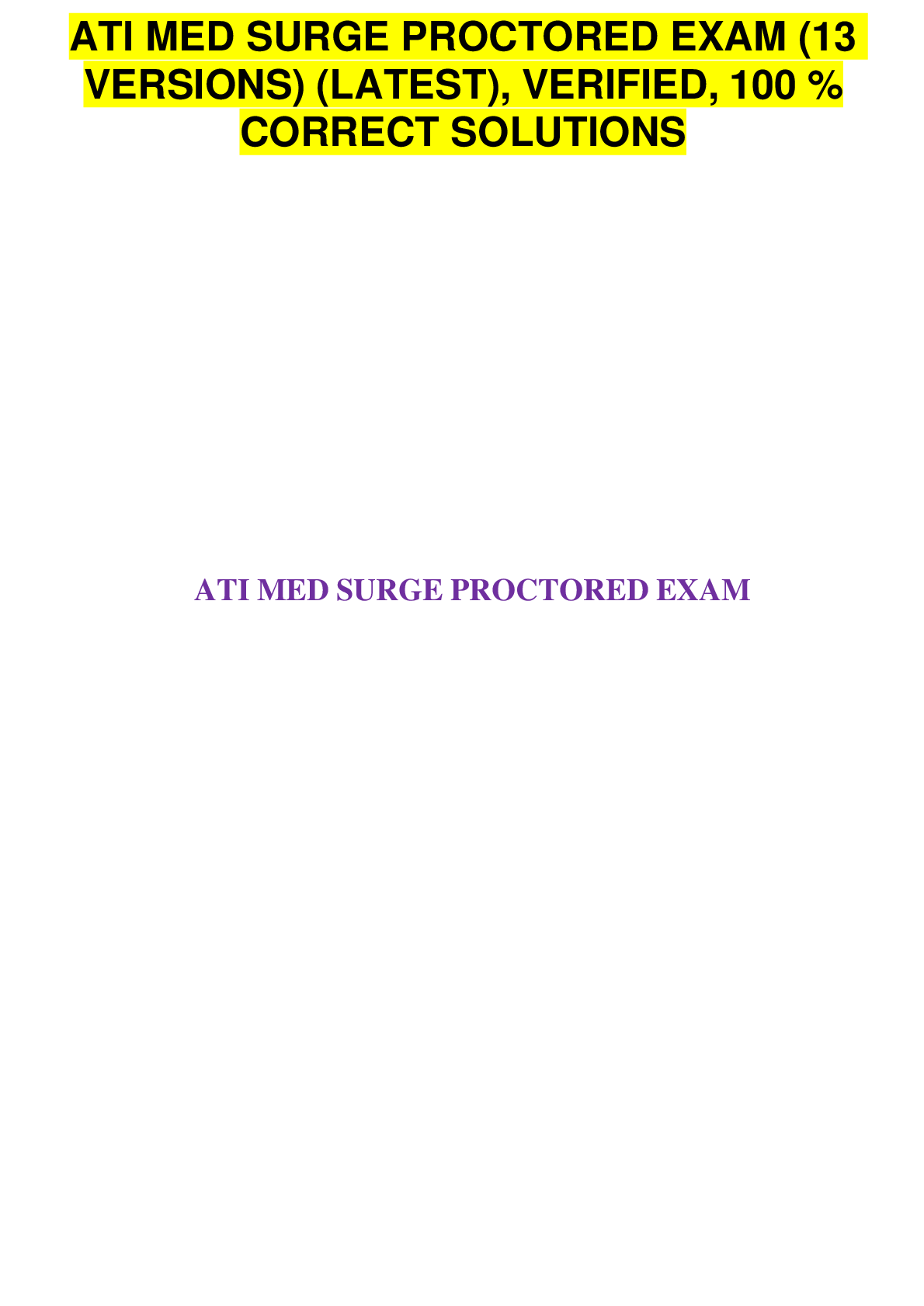
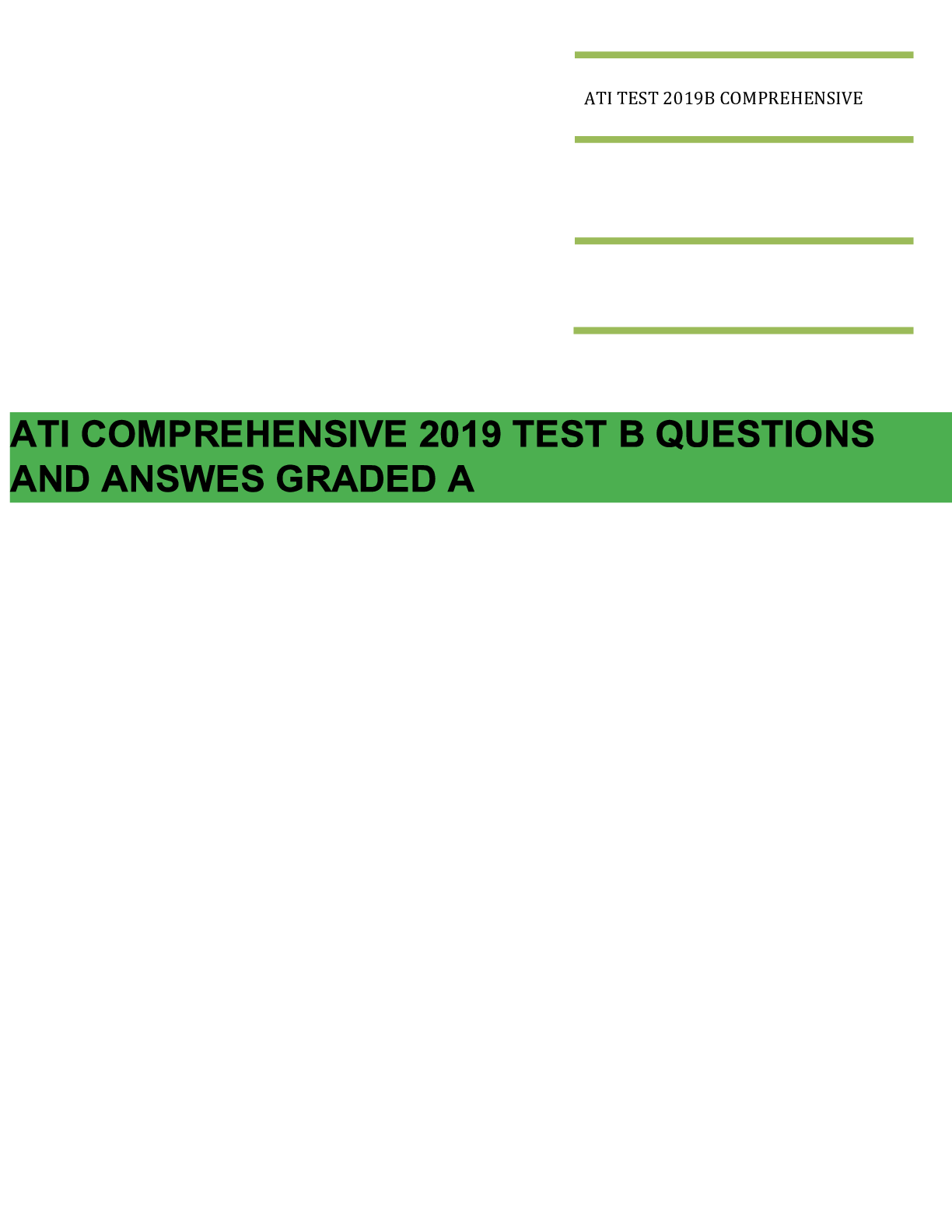
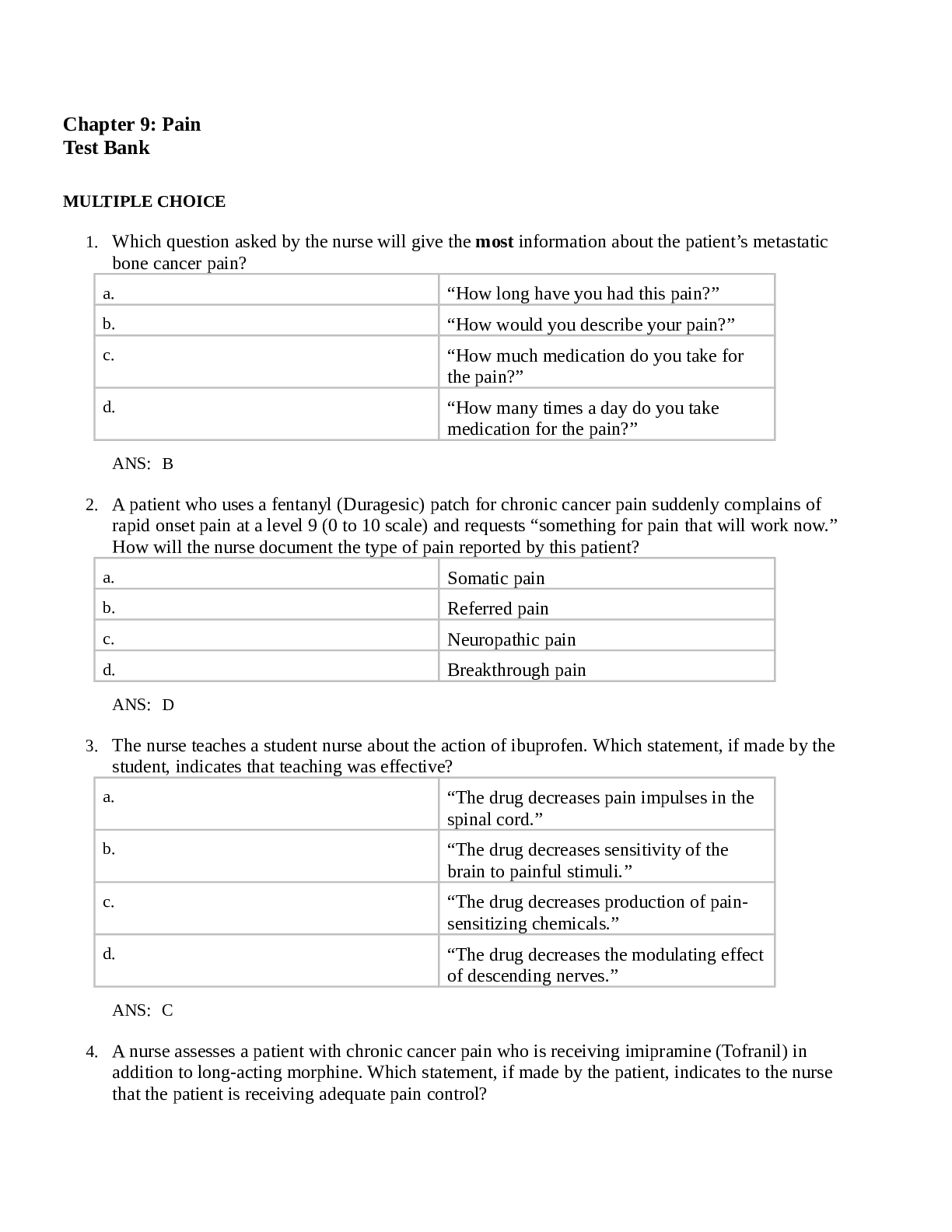
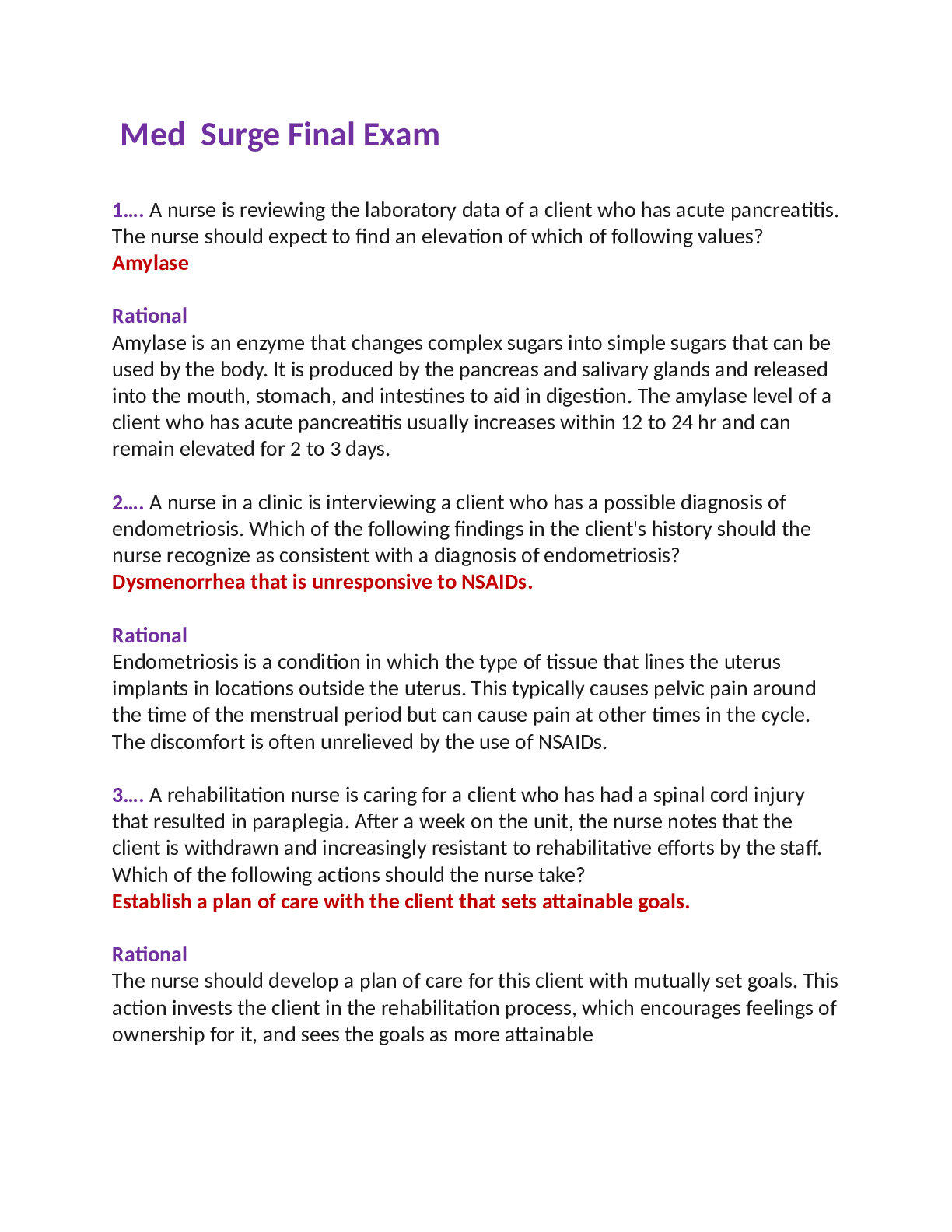
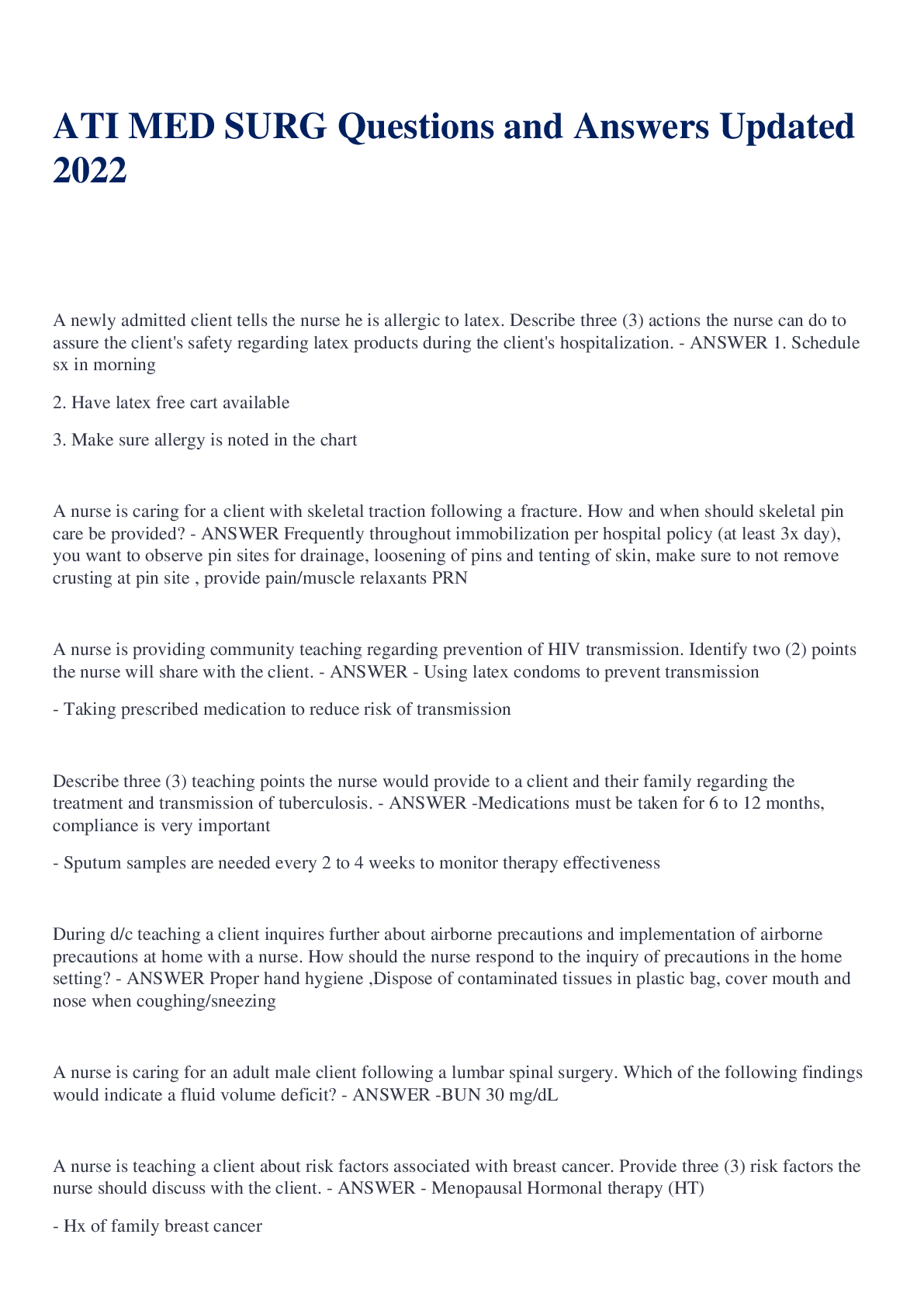
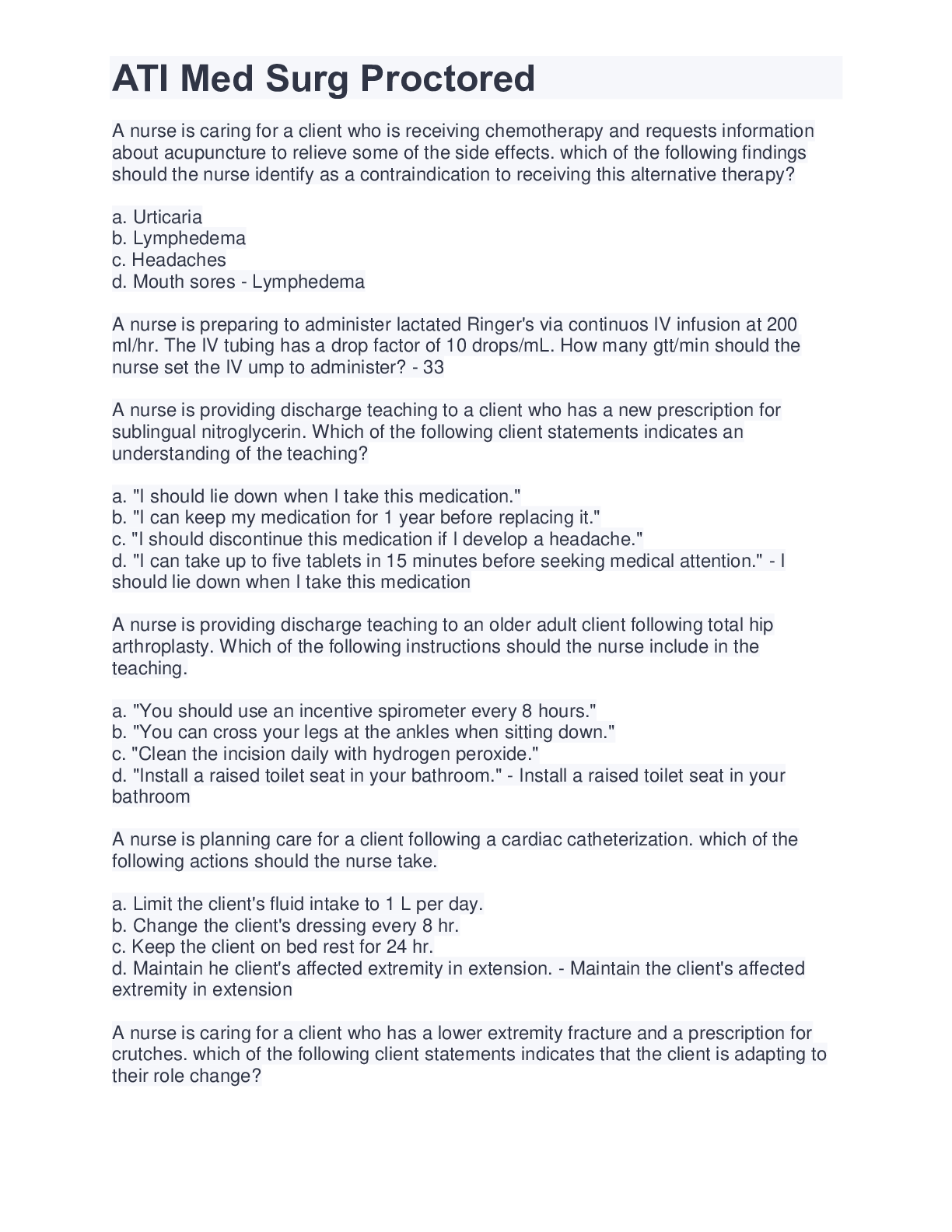
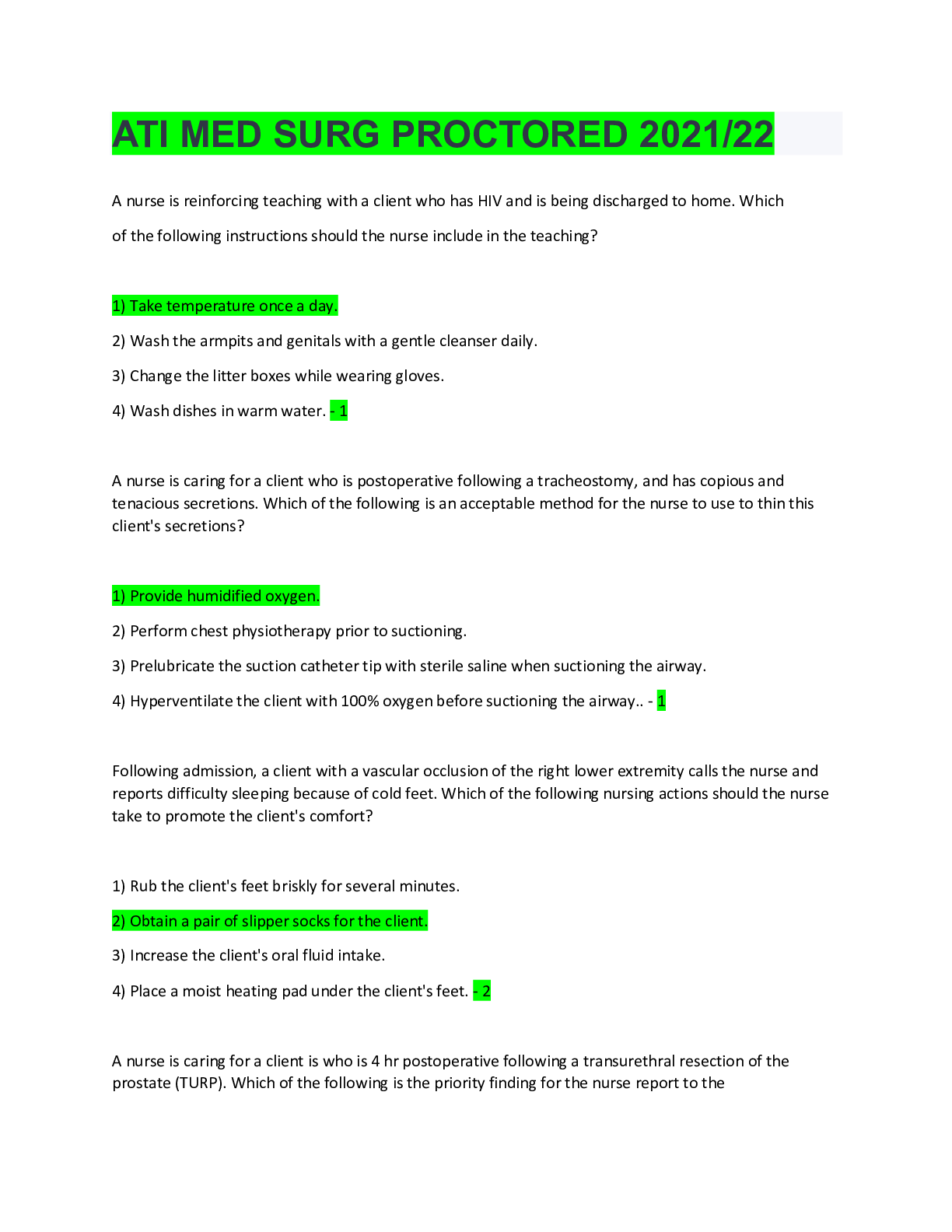
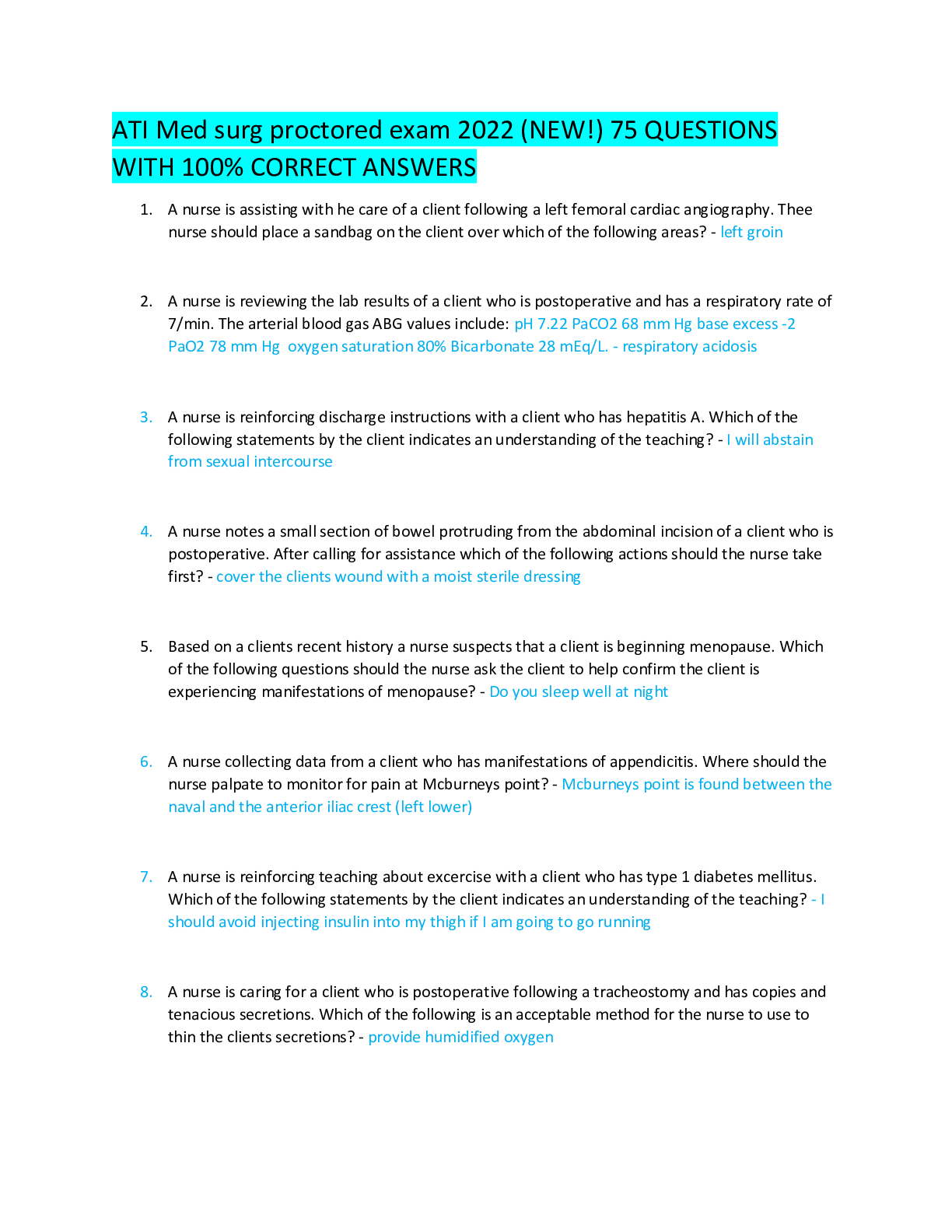
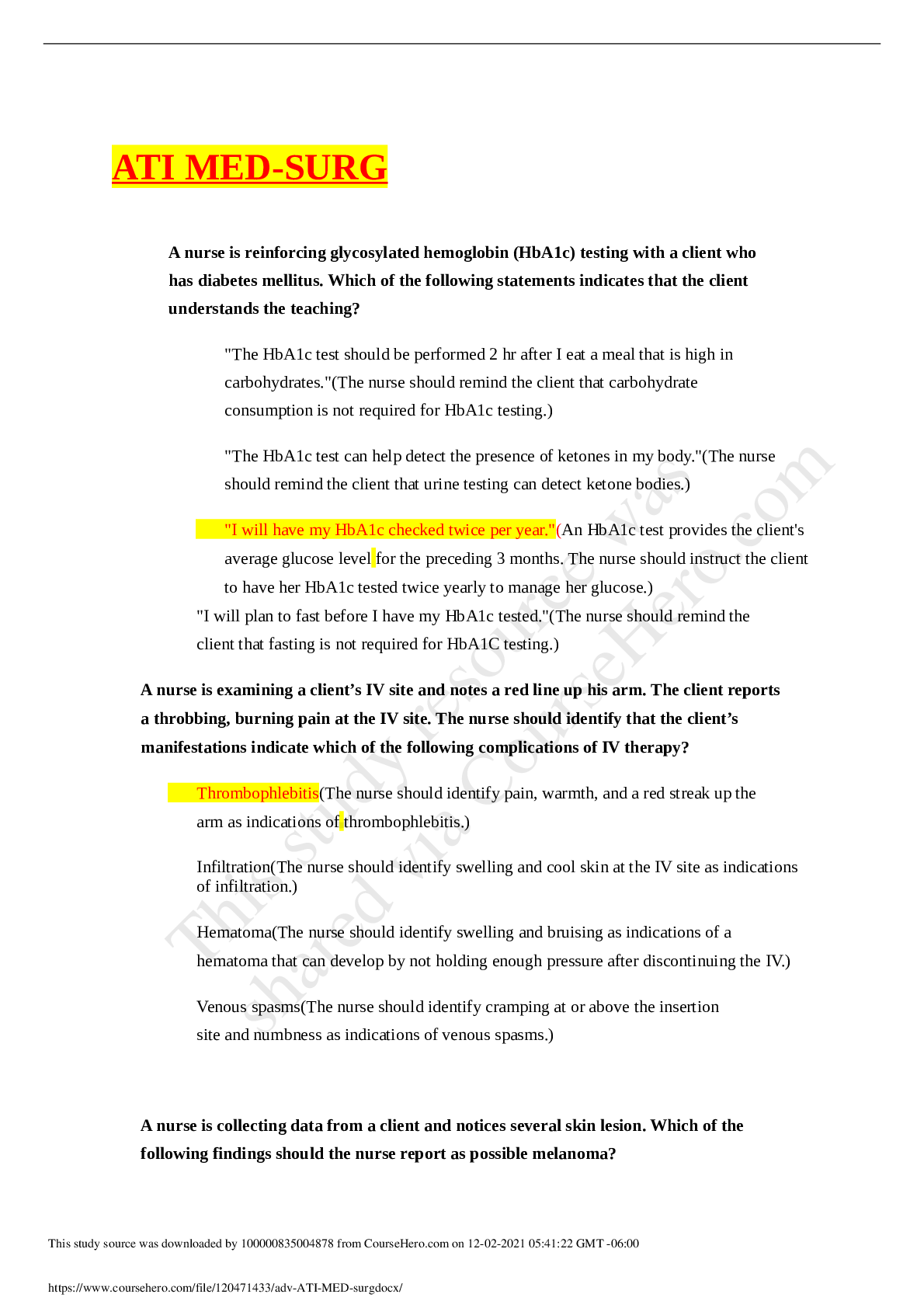


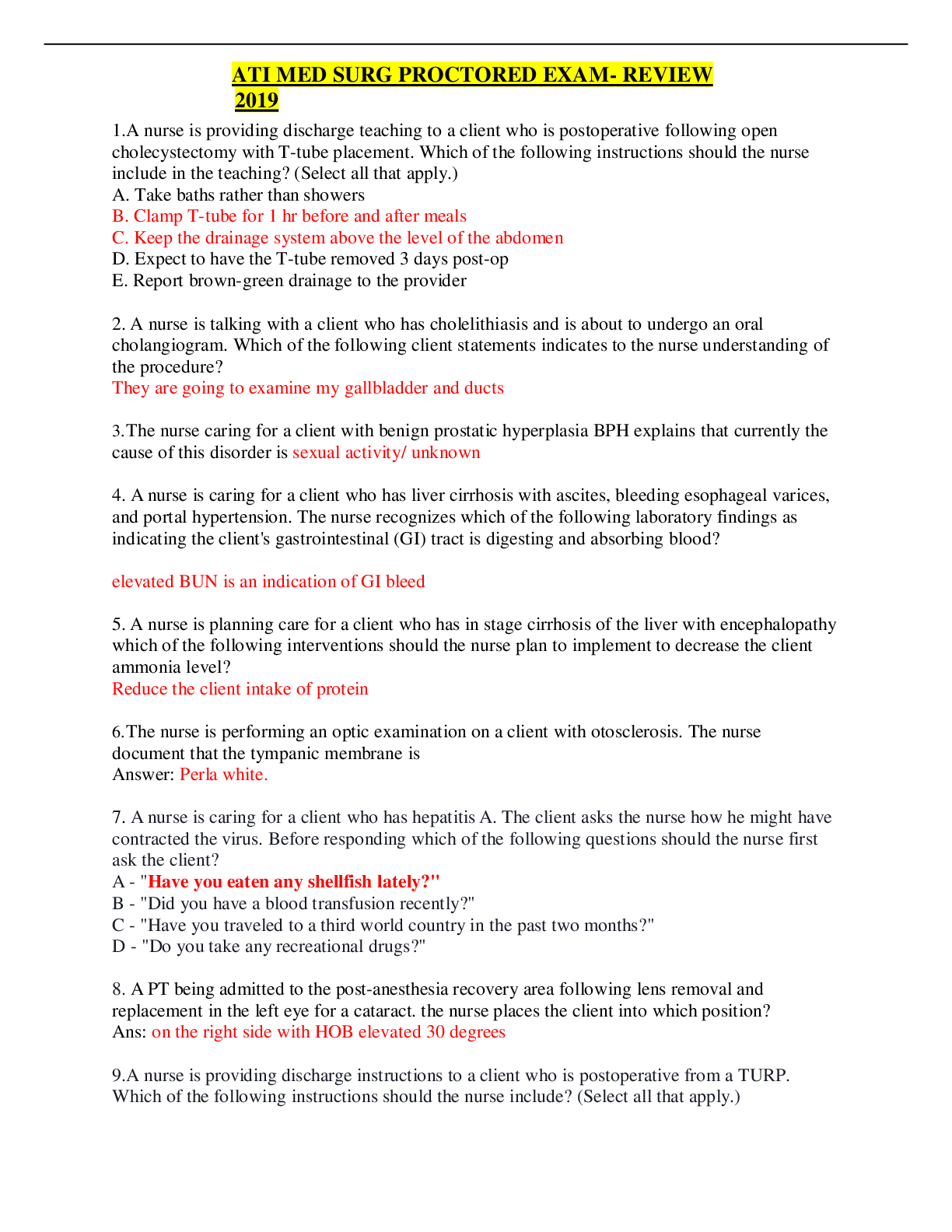
.png)
.png)
